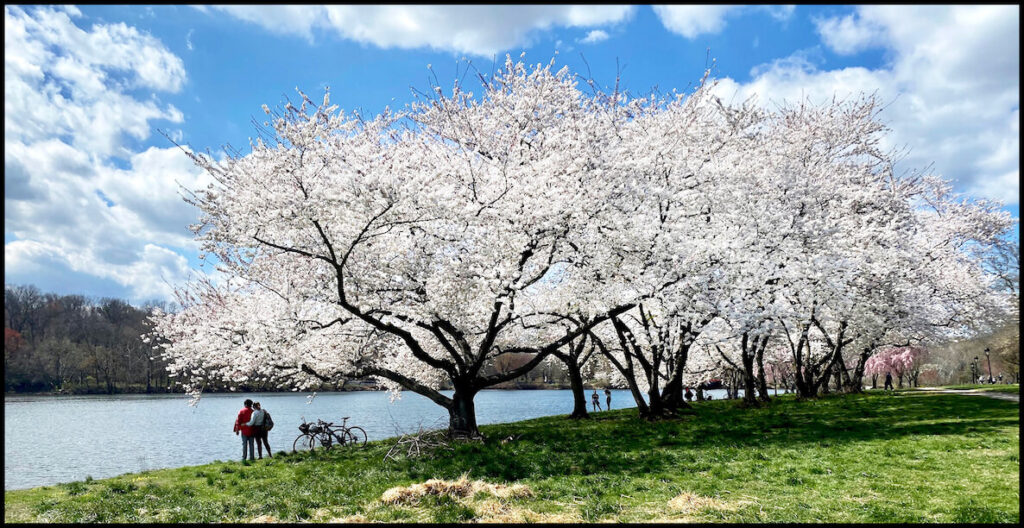Published June 25, 2025
🌸 Rooted in Philly: A Short History of the City’s Most Iconic Trees

Walk through any block in Philadelphia — from the leafy lanes of Mount Airy to the polished parks of Fitler Square — and you’ll notice one thing tying the city together: trees. Some are wide and weathered, others slim and blooming, but all of them whisper a little history if you’re paying attention.
As someone who’s spent years helping people find home in this city, I’ve learned that Philly’s trees aren’t just decoration — they’re part of the story. Here’s a look at the roots of our favorite trees and why they’ve stuck around (or haven’t).
1\ The Dogwood
Photo via Facebook | Tree Philly
Philadelphia’s love affair with the dogwood goes back to the colonial era. These trees were valued not just for their soft, pink-white spring blossoms, but because they were hardy, native, and thrived in our clay-heavy soil.
By the 1800s, dogwoods were so common in formal gardens and churchyards that they were considered a symbol of purity and resilience — themes that resonated deeply in a city shaped by Quakers, craftsmen, and revolutionaries.
Even today, you’ll spot them dotting front yards in Germantown and East Falls, still winning hearts like they did 200 years ago.
2\ The Sycamore

If you’ve ever driven down a road lined with towering giants that look like they’re peeling, you’ve met the American sycamore. Known for its camouflage bark and broad canopy, the sycamore was often planted along old estate driveways and farms.
3\ The London Plane Credit: Nature Photographers Ltd / WTML
Credit: Nature Photographers Ltd / WTML
A hybrid of the American sycamore and Oriental plane, London plane trees were Philly’s answer to urbanization in the 19th century. These were the go-to trees for early city planners who needed something tough — able to survive soot, compacted roots, and trolley exhaust.
By the early 1900s, you’d see London planes planted all along Broad Street, in Fairmount Park, and near train stations. With their high canopies and fast growth, they were seen as elegant but no-nonsense — a bit like Philly itself.
4\ Cherry Trees
 Credit: Sabina Louise Pierce
Credit: Sabina Louise Pierce
These weren’t always part of Philadelphia’s tree palette. Cherry trees rose to local fame in the mid-20th century, largely thanks to Japanese cultural influence and the postwar beautification movement.
Planting cherry trees became a symbol of peace and renewal, and you’ll find clusters of them today in West Philly, Clark Park, and scattered around Northern Liberties. They don’t last as long as sycamores, but their spring show is unforgettable.
What Happened to the Elms and Chestnuts?

Credit: Ken Leroy ( University of Pennsylvania Quad Elm)
Not all trees have fared well in Philly. American elms, once the backbone of city boulevards, were devastated by Dutch Elm Disease. Chestnut trees, which once blanketed the region, were wiped out by the blight in the early 1900s.
You’ll still hear the echoes in place names — Chestnut Hill, Chestnut Street — but the trees themselves? They’re mostly gone. Today, many native restoration projects are trying to bring them back.
Rooted in History, A Future of Growth

In real estate, we talk about property lines, floor plans, and finishes — but trees? They speak to permanence. They connect generations of Philadelphians who’ve walked under the same canopies, leaned against the same trunks, and raked the same fall leaves.
Whether you’re planting your first dogwood or considering how a tree might add long-term value to your home, remember: in Philly, trees aren’t just landscaping. They’re living pieces of the city’s DNA.
See us featured in the House Beautiful "Experts Say Trees Can Add THOUSANDS to Your Property Value"






